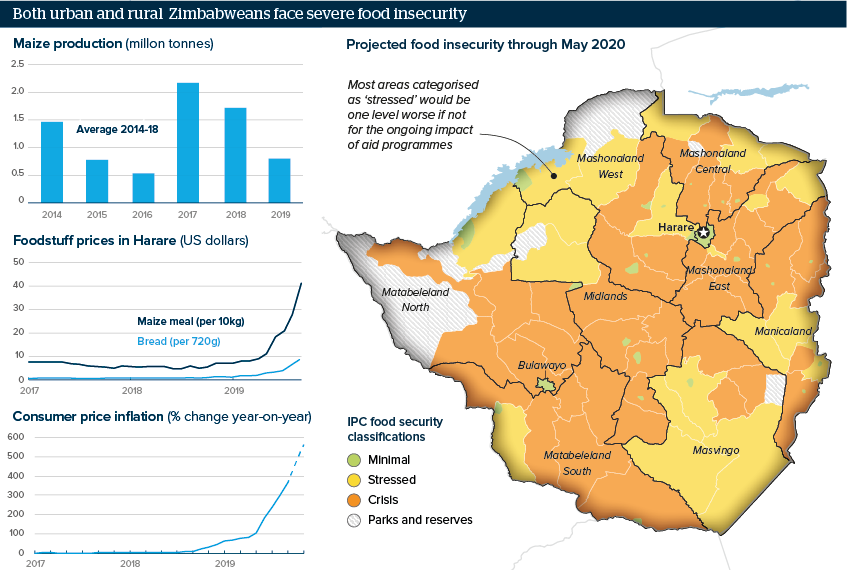Zimbabwe faces worsening interlocked crises
Zimbabweans face acute economic and social pressures as the impact of drought and rising living costs take hold
Source: Media reports; FEWS net; UN OCHA; UN FAO; Thomson Reuters Datastream; Reserve Bank of Zimbabwe; Zimstat
Outlook
The impacts of drought and rising food prices mean some 5.5 million people -- one-third of Zimbabwe’s population -- will likely require emergency food assistance between now and May 2020. Meanwhile, drought has also severely impacted wildlife, with some 200 elephants dying in recent months. Zimbabwean authorities are planning a massive translocation of wildlife to avert further disaster.
Food insecurity is exacerbated by the rising price of staples amid ongoing economic upheaval. A foreign exchange crisis has seen inflation hit an estimated 500% or higher year-on-year. Harare this week introduced new local currency coins and notes to help ease cash shortages, but inflation could yet spike further alongside renewed currency depreciation -- further eroding Zimbabweans’ purchasing power.
Impacts
- Harare’s international engagement will remain haphazard amid recent criticism of US officials and a problematic anti-sanctions campaign.
- Increased urban-based hardship may increase already strong support for the opposition Movement for Democratic Change (MDC-T).
- The growing cost of living and hunger among soldiers will prompt fears of renewed military unrest and the potential for another coup.
- Increased public-sector strikes will heap additional pressure on both public services and Harare’s fiscal consolidation targets.
See also
- Zimbabwean government will try to entrench its control - Jan 22, 2020
- African states face widening climate impact challenges - Dec 24, 2019
- Zimbabwe economic crisis may escalate further - Oct 2, 2019
- More graphic analysis
